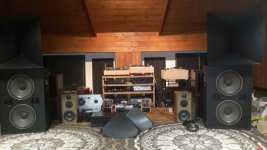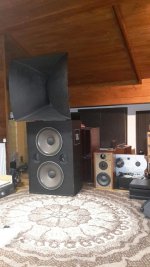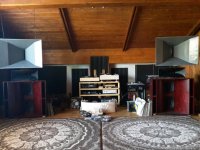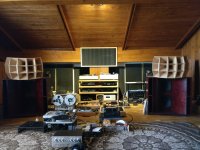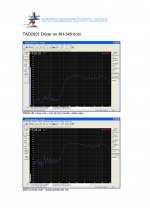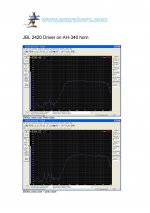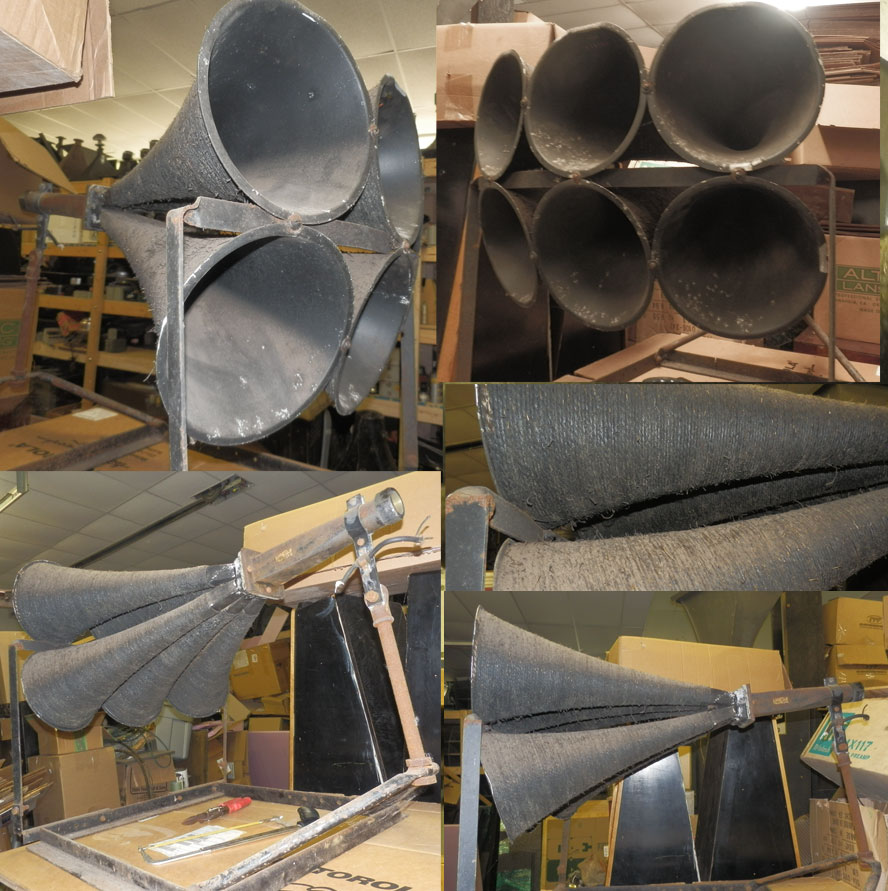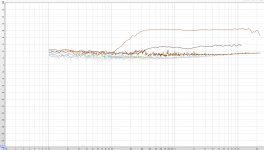A friend of mine went through some JBL driver combinations, his favorite so far is the one with the wooden horn and the Altec 906/dual 515 combination but it is augmented with a Fostex HF.
Attachments
You will be hard pressed to find a competitive driver of equivalent performance if the disclosures made by Celestion are accurate. Some reasons for this observation follow:
1) The Celestion axi2050 is a highly refined design of a large format compression driver similar to the Community M4 with a far superior performance.
2) With a large annular diaphragm and accompanying dual surround, rocking modes that occur at lower frequencies are suppressed while relative large excursion remain materially linear, and while a respectable volume displacement is delivered.
3) The waffleized diaphragm mitigates breakup modes at high frequencies as well.
4) The phase plug is designed to deliver a planer wave front at driver exit, which provides an ideal match with an O.S. Horn throat and body (joined at its hyperbolic apex).
5) The PWT frequency response curve is impressive. It is essentially ruler flat over the range 100-3,000 Hz. with gradual downward slopes beyond. Amazing!
The challenge here will be, designing a horn that does not impair such a superlative performance, while maintaining a reasonable directivity constant.
WHG
Thanks for chiming. If I aim for a horn that is 1/2wave length of 200hz, it’s only 33inches....a little bigger for the jmlc curve.
What do you think about crossing over to the td15m at 200hz-300hz and then the 18h+ after about 80hz vs crossing straight to an 18h+?
A friend of mine went through some JBL driver combinations, his favorite so far is the one with the wooden horn and the Altec 906/dual 515 combination but it is augmented with a Fostex HF.
Stunning Altec system!
Those mutlicells are Markus Klug's 1505B replica's?
I wonder if a slightly scaled up 1803 with a custom throat adapter for the Axi2050 would facilitate 200-20.000Hz without tweeter.
Probably not.
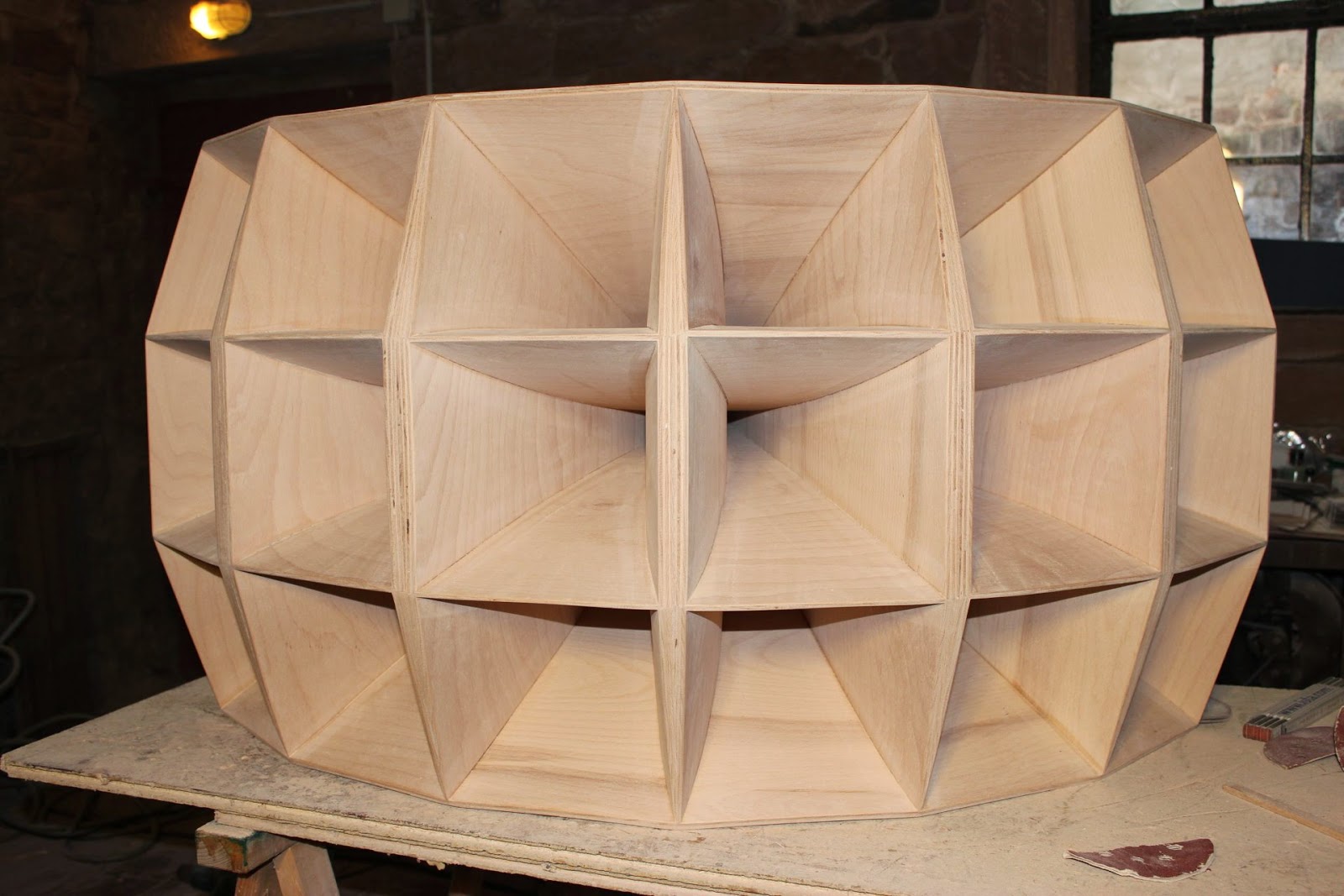
Last edited:
Sectoral horns are still widely used for sound reinforcement, mostly in line arrays, but also in some large 'point and shoot' systems
The Austrian guys who built the Wall of Sound - posted a few pages ago, use sectoral horns for their mid-high cabs.
Apparently, somebody liked the Lambda Labs club systems so much, he decided to use a few of those hornloaded cabs at home:

Lambda Labs also builds highly directional subwoofers:

The Austrian guys who built the Wall of Sound - posted a few pages ago, use sectoral horns for their mid-high cabs.
Apparently, somebody liked the Lambda Labs club systems so much, he decided to use a few of those hornloaded cabs at home:

Lambda Labs also builds highly directional subwoofers:

Last edited:
Being a fan of the multicell horn, I replaced pair of QSC line arrays with Altec 803 horns supported by 18" woofers. The results were beyond expectations. Not only did it "sound better" but coverage was far more even and less phasey than the line arrays. I was pleased. Old tech still has merit.
'Exponential' times 15, or 18, is not only just 'sacred', but allegedly also 'celestial' 

Last edited:
Impedance of real horns allways possess a reactive part. At high frequency all horns and waveguide possess a nearly pure resistive impedance. Things differs when frequency decreases.

I want to make sure that everyone understands what the acoustical impedance as shown above means and shows. In this example the device is not infinite, but finite, and the ripples (peaks and dips) are the result of a standing wave between the throat and the mouth. In this example the mouth reflection would have to be very large for this level of ripple.
If the waveguide is OS and the mouth is adequate terminate then these ripple will disappear. When they disappear the reactive component gets smoothed out and has much lower values. This means that the group delay will be much lower and, in fact, becomes virtually irrelevant.
When you see large ripples like this, you know that diffraction and reflections are excessive. One can also look to the drivers electrical impedance as these ripples will appear there as well, but not as clearly as they will appear in a pure acoustical; impedance.
In my waveguide there are no ripples at all in the electrical impedance, only the two peaks that are always present in a compression driver. Ripples always indicate a problem - they are never a good thing.
Here's the article "Taming the ALTEC A5 Classic for Domestic Use" by John Stronczer of Bel Canto Design for Sound Practices Magazine.
Also attached: the complete AES research paper by Philip Newell and Keith Holland, on which the article "Round the Horn" (mentioned by John Stronczer) was based.
Attachments
I want to make sure that everyone understands what the acoustical impedance as shown above means and shows...
Ripples always indicate a problem - they are never a good thing.
Correct, thanks for the complementary explanation.
You've probably recognized the quote by JMLC, which was posted many years ago in another thread.
You've probably recognized the quote by JMLC, which was posted many years ago in another thread.
No, not really.
Around the same time, Bjørn Kolbrek posted some BEM sims of the AH425 (Azura Horn) in Lynn Olson's "Beyond the Ariel" thread.
The AH425 is a smaller JMLC horn.
The AH-340 with full roll back is probably more akin to camplo's horns.
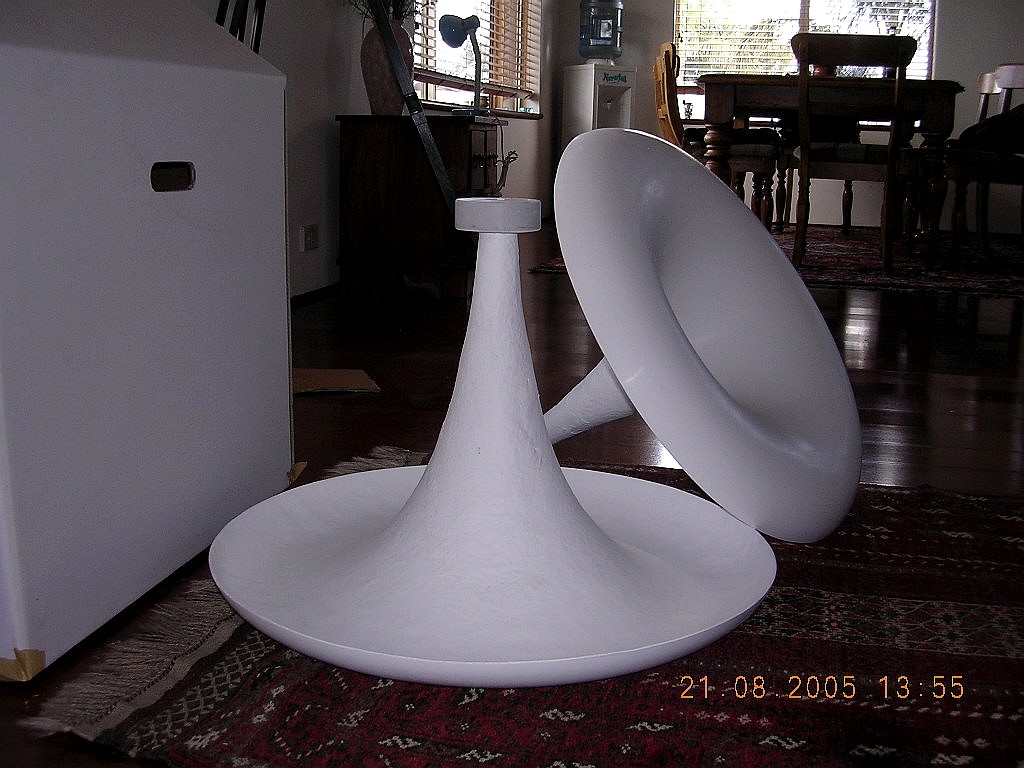
The AH425 is a smaller JMLC horn.
The AH-340 with full roll back is probably more akin to camplo's horns.
Attachments
-
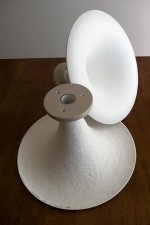 ah425-4.jpg52.8 KB · Views: 170
ah425-4.jpg52.8 KB · Views: 170 -
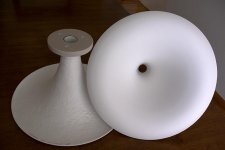 ah425-3.jpg50.9 KB · Views: 133
ah425-3.jpg50.9 KB · Views: 133 -
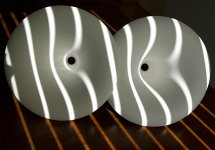 ah425-2.jpg54.6 KB · Views: 126
ah425-2.jpg54.6 KB · Views: 126 -
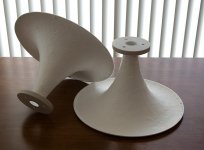 ah425-1.jpg50.4 KB · Views: 176
ah425-1.jpg50.4 KB · Views: 176 -
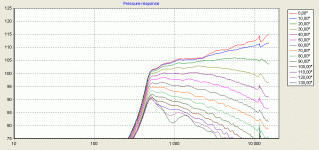 frequency respone plots for constant throat velocity (no driver), 3m distance, for the shell ver.gif12.1 KB · Views: 209
frequency respone plots for constant throat velocity (no driver), 3m distance, for the shell ver.gif12.1 KB · Views: 209 -
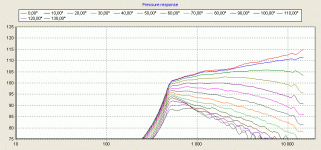 frequency response curves without driver for the AH-425. This is the SPL at a 3m distance from t.gif13 KB · Views: 463
frequency response curves without driver for the AH-425. This is the SPL at a 3m distance from t.gif13 KB · Views: 463 -
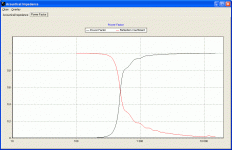 ah425_powerfactor.gif21.8 KB · Views: 464
ah425_powerfactor.gif21.8 KB · Views: 464 -
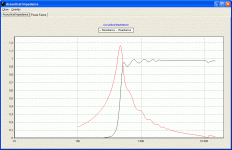 throat impedance for AH-425.gif23.5 KB · Views: 469
throat impedance for AH-425.gif23.5 KB · Views: 469 -
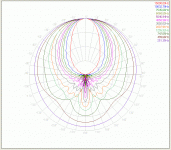 polar plot for AH-425.gif31.6 KB · Views: 461
polar plot for AH-425.gif31.6 KB · Views: 461
Last edited:
Plots of the AH-340 with TAD TD2001 and JBL2420.
Attachments
Last edited:
Thanks for the post. It's been years since I've read that. I emailed Stronczer a couple of times but never heard back. Since I was the one who built that A5 system with Jean Hiraga, it has special meaning for me. (I wanted a Hi-Fi PA, Hiraga lent me the gear if I would build it).Here's the article "Taming the ALTEC A5 Classic for Domestic Use" by John Stronczer of Bel Canto Design for Sound Practices Magazine.
I'll read the other paper, don't think I've seen it before.
Thanks for the post. It's been years since I've read that. I emailed Stronczer a couple of times but never heard back. Since I was the one who built that A5 system with Jean Hiraga, it has special meaning for me. (I wanted a Hi-Fi PA, Hiraga lent me the gear if I would build it).
I'll read the other paper, don't think I've seen it before.
It's an interesting read, Holland & Newell's work is (still) considered a benchmark research on perceptual differences between horn types.
Their rule of thumb: horns with a depth <30cm, are less likely to sound like a horn.
Mine are 30.8cm... 😱
Last edited:
Stunning Altec system!
Those mutlicells are Markus Klug's 1505B replica's?
I wonder if a slightly scaled up 1803 with a custom throat adapter for the Axi2050 would facilitate 200-20.000Hz without tweeter.
Probably not.
Indeed it is a Klug Horn, he is in love with it. I love the looks as well, the wood is so nice and somehow it has a higher WAF, not that the Azura horn is ugly but still. Axi2050 plus a huge Klug horn=LOVE. May be we should ask him?
And oh that Axi2050... It looks so damn interesting, advanced, extended, unobtainable, all the things we love... If only Bjorn Omholt hadn't said that the Radian is better 😉
I really know how camplo feels about the drivers he chose, if only that fear of missing out was not there. So many drivers and so many choices to make, I honestly hate it. I need someone with reputation 🙂) ) to stand up and just say X or Y or Z is the best, period.
 But we all know that if you just spend some time to really work with what you have is a trillion times better than what could be if.
But we all know that if you just spend some time to really work with what you have is a trillion times better than what could be if. This is a fascinating thread, thanks again camplo and Ro808 and everybody.
Indeed it is a Klug Horn, he is in love with it. I love the looks as well, the wood is so nice and somehow it has a higher WAF, not that the Azura horn is ugly but still. Axi2050 plus a huge Klug horn=LOVE. May be we should ask him?
And oh that Axi2050... It looks so damn interesting, advanced, extended, unobtainable, all the things we love... If only Bjorn Omholt hadn't said that the Radian is better 😉
The one person with the answer to the question "would an Axi2050 work with a Klug multicell + custom throat adapter?" is Bjørn Kolbrek.
Unfortunately, I am afraid he doesn't read this thread.
- Home
- Loudspeakers
- Multi-Way
- Is it possible to cover the whole spectrum, high SPL, low distortion with a 2-way?
